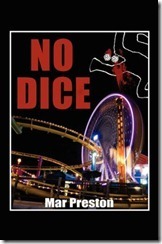Riley Adams's Blog, page 174
July 3, 2012
The Luxury of Having Options
 by Elizabeth S. Craig, @elizabethscraig
by Elizabeth S. Craig, @elizabethscraig
Today is July 4th and those of us in the States are celebrating our country’s independence.
It’s a day when we usually celebrate freedom of all kinds. And eat lots of grilled food. :)
One of my favorite things about living in a free country is having choices—being able to choose with whom we want to associate. Being able to choose how or if we want to worship. The option to travel freely to other countries.
And even the freedom to make very small choices. Like how we want to approach publishing our book.
It’s baffled me how acrimonious the traditional publishing vs. self-publishing debate has become. Emotions have run high in both camps and it seems to be centered around who’s right and who’s wrong.
I don’t think it matters who’s right and I don’t think it really matters what we choose to do with a particular book. We should probably just write plenty of books and experiment.
I’ve just handed in the fourth book of my Memphis Barbeque series to Penguin.
Now I’m writing a book to self-publish. I’ve self-published two other titles, but one was backlist and one was written for traditional publishing but didn’t sell. This is the first time I’ve written a book for the sole purpose of self-publishing it.
After that, I’ll be working on my 3rd book for the Southern Quilting mysteries for Penguin.
I couldn’t feel less-conflicted about it. I won’t try to shop the book I’m writing independently—it won’t be sent to my agent. I won’t agonize over the fact that I’m writing books for a traditional publisher and whether that means I’ll miss out on higher royalties.
Actually, it’s a real luxury to have more than one option. What’s a good approach for one book may not be right for another.
So that’s what I’m celebrating on this 4th of July—having options and having the ability to freely choose between them. What are you celebrating?
Happy 4th to my friends in the States. :)
Image: Flickr—Lou Ann A
July 1, 2012
Check Your Facts, Ma’am! Guest Post by Jodie Renner
by Jodie Renner, freelance editor
@JodieRennerEd
You’re busy creating your story world with your right brain, rolling along with the great plot and developing your characters while your muse is buzzing. Great! But later, when you’ve got that first draft done, it’s important to switch to your left brain and go back and check for logistics, time sequencing, and continuity of character and setting details—or get someone else to do it for you.
And while you’re at it, verify your facts, to avoid annoying or even alienating your readers – and eroding your credibility. “But,” you say, “I’m writing fiction, so who cares about facts?” You should, because you want to create a credible world for your readers to be drawn into, and if an erroneous fact jars them out of it, they’re going to be disappointed and annoyed. Think about watching a movie about Ancient Rome and suddenly you notice a watch on one of the gladiators! The illusion of being caught up in their world is shattered.
If you’re writing a western, make sure the gun makes and models they use were invented by that period. And in a contemporary novel, don’t have a character in the 70s researching a topic on her home computer or emailing friends! I recently read a novel in which the (missing and assumed dead) mother of the protagonist had sent emails 20-25 years earlier! I think I personally started emailing around 1996 or ’97. How about you? Similarly, don’t have your everyday characters carrying around cell phones before the mid- to late-‘90s. Even today, there are large parts of North America with no cell phone service, so if your story is set in a remote area, be sure to check before having your characters use their mobile phones there.
In a historical fiction I edited a few years ago, a murderer was running from the police in England, around 1845. He headed to the port and spotted a lone man with a ticket for a passage across to New York. He lured him into a secluded area, stabbed him, and stole his ticket for the ship, which he boarded almost immediately. Arriving in America three or four weeks later, he was greeted by his uncle, whom he’d arranged to meet him at the pier. I immediately queried the author as to how the fugitive, who’d boarded the ship at the last minute, could have arranged for his uncle in America to be at the harbor to meet him? By telephone? The author admitted he hadn’t thought of that, and was grateful that I’d pointed it out.
Also, be aware of whether expressions were in use in the time frame or geographical region of your story. If you use a modern expression in a historical fiction, it jolts the reader out of that time period, and they’ll probably feel you did a shoddy job of recreating that world for them. For example, in a historical fiction I was editing that took place about 150 years ago, the term “upscale” was used. This struck me as out of place for that time, so I looked it up. Merriam-Webster lists “upscale” as first being used in 1966, so to even use it in narration in a historical fiction takes the reader out of that world. Same with the even more recent expression, “high-end” (coined around1977). For historical fiction, better to use “upper-class” or “elegant” or “sophisticated” or “affluent” or “wealthy.” A few other fairly recent expressions that would date a book set in the ‘50s to ‘80s would be “metrosexual” (Merriam-Webster says it was coined in 1994), “24/7” or the more recent “My bad.” Can you think of any words, terms or expressions that have jumped out at you as anachronistic in a book or movie set in the past, even 20 or 30 years ago?
And as a freelance editor, I constantly notice little errors like an amber necklace suddenly being called a sapphire necklace later in the evening; someone picking a daffodil from the garden in October, a wound in the forearm moving inexplicably to the hand; a character’s vehicle color, make or model changing; problems with dates and time sequencing; sudden changes in a character’s name, age, or appearance; inconsistencies with the season, climate or geography; and so on. I was editing a murder mystery several years ago where the victim had been shot in the head while he sat in his car (a single gunshot). Several chapters later, the autopsy was investigating his only wound—in his chest! And another where an apple tree in blossom became, the next morning, a tree bearing ripe apples! If errors like these aren’t picked up before your story is published, you can be sure that a number of readers will notice them and may lose confidence in you as a writer—and put down your story. Or worse, write a bad review of it on Amazon.
So if in doubt about facts in your story, take the time to look them up, or run your story past trusted readers before publication. Better yet, employ the services of a freelance editor, who will be on the lookout for incorrect information, discrepancies, and logic problems, and may query you with a comment like “Was this invented back then?” or “Did she just buy a new car? The one she had yesterday was a blue Toyota. Now she’s driving a Ford,” or “Who’s Ralph?” (That character whose name you changed.) The last thing you want is for your readers to say, “Oh, come on! This doesn’t make sense!” then toss the book aside.
How about you? As a reader, have you ever been jolted out of a story by something that didn’t make sense? As a writer or editor, have you noticed incongruities that needed to be fixed? Do you have any interesting or funny or absurd examples to share?
 Jodie Renner is a freelance editor, specializing in suspense/thrillers, romantic suspense, mysteries and other crime fiction, as well as mainstream, YA, and historical fiction. For more information on Jodie’s editorial services, please visit her website at
www.JodieRennerEditing.com
.
Jodie Renner is a freelance editor, specializing in suspense/thrillers, romantic suspense, mysteries and other crime fiction, as well as mainstream, YA, and historical fiction. For more information on Jodie’s editorial services, please visit her website at
www.JodieRennerEditing.com
.
Thanks for coming by today, Jodie! Jodie will be doing a series of monthly guest posts for me to look at writing from an editor's point of view. I'm looking forward to them. :)
Image: Flickr: kylemacdonald/
June 30, 2012
Twitterific
by Elizabeth S. Craig, @elizabethscraig
Twitterific is a compilation of all the writing links I shared the previous week.
The links are fed into the
Writer’s Knowledge Base
 search engine (developed by writer and software engineer
Mike Fleming
) which has over 16,000 free articles on writing-related topics. Sign up for our
free newsletter
for monthly writing tips and interviews with top contributors to the WKB or
like us on Facebook
.
search engine (developed by writer and software engineer
Mike Fleming
) which has over 16,000 free articles on writing-related topics. Sign up for our
free newsletter
for monthly writing tips and interviews with top contributors to the WKB or
like us on Facebook
.
Have a great week!
Finding Balance Among Opposites in the Creative Process: http://bit.ly/MAIASo @cjtreggett @PatrickRwrites
Increase the Chances of Your Book Becoming a Breakout Hit: http://bit.ly/MAIIB6 @janefriedman
Can Writers Earn a Living Writing Just One Book a Year? http://bit.ly/MAIOcd @jodyhedlund
Making History Appealing to Teen Readers: http://bit.ly/MAJ22P @janice_hardy @kalongshore
Digital reading is social, but needs improvement: http://bit.ly/MAJbn3 @criticalmargins
5 Story Mistakes Even Good Writers Make: http://bit.ly/MAL5Ea @writersdigest
Using real people in fiction: http://bit.ly/MALXbU @beth_barany
An editorial director answers publishing questions: http://bit.ly/MAM5Ip @behlerpublish
Writing YA: Capturing the Teen Voice: http://bit.ly/MAM87a @diymfa
The Beauty of Low-tech Blogging: http://bit.ly/KCHisA
The Blogger's Essential WordPress Guide: 13 Tutorials: http://bit.ly/KCHjNi @problogger
Authenticity of Voice: http://bit.ly/KCHp7C
Accomplish Your Writing Goals: Make a Schedule and Meet Your Deadlines: http://bit.ly/KCHt7f @writersdigest
Alliteration and Repetition: http://bit.ly/KCHwjw @eMergentPublish
Pen Name: How To Create Yours: http://bit.ly/KCHAzV
Changes in crime fiction through the years: http://bit.ly/KCLNDK @mkinberg
The Vacation Writing Balancing Act: http://bit.ly/KHkNmy @TaliaVance
Finding Themes in a Brainstorm: http://bit.ly/KHkRmk @livewritethrive
8 publishing landmines and 8 tips for dealing with them: http://bit.ly/KHkZlA @KatieGanshert
Cover letter dos and don'ts: http://bit.ly/KHl0pK @nicolamorgan
An agent on movie deals: http://bit.ly/KHl20S @SaraMegibow
5 Mistakes Of New Fiction Writers: http://bit.ly/KHl4WA @thecreativepenn
A list of free stock photo sites: http://bit.ly/KHl7S5 @NinaAmir
Should you give your antagonist a POV? http://bit.ly/KHlhca @KMWeiland
11 Questions to Turn a Target Market into a Reader Profile: http://bit.ly/KHljB0 @duolit
2 Questions That Will Stunt a Writer's Progress: http://bit.ly/KHlnAz @christi_craig
The pre-conference query: http://bit.ly/MQc0tG @literaticat
10 myths about introverts: http://bit.ly/MQchN4 @carlking
7 "You Know What I Meant" Mistakes: http://bit.ly/MQcjVd @writing_tips
Layers of emotion in our writing: http://bit.ly/MQcujf @Kid_Lit
How to Survive the Query Wars: http://bit.ly/MQczUl @ava_jae
Where Is Your Character Going? http://bit.ly/MQcLmg @jacobkrueger
Showing vs. telling: http://bit.ly/MQcKyK @writersdigest
3 elements in a successful query: http://bit.ly/MQcUGz @msheatherwebb @janice_hardy
10 Tips for a Terrific Antagonist: http://bit.ly/MQdB2t @howtowriteshop
Find the talisman in your book: http://bit.ly/MQdDri @diymfa
Using Setting as a Character: a Tip for Novelists: http://bit.ly/MQegRz @MaryLuTyndall
The Universal Fairy Tale: http://bit.ly/MQep7D @storyfix
The escaping character problem: http://bit.ly/MQeyIi @litreactor
Investment vs. Payoff: Is Blogging Worth the Time? http://bit.ly/MQeBnn @roniloren
For Publishers, The Long Term Is the Only Race Worth Winning: http://bit.ly/MQfjRm @pubperspectives
Time-related demands on the modern writer: http://bit.ly/MQfBHY @jodyhedlund
40 Irregular Verbs That Can End in "-t": http://bit.ly/MQfDj9 @writing_tips
Why you should be a writer: http://bit.ly/MQfPPt @sarahahoyt
Your freelance career--how to get and stay organized: http://bit.ly/MQg1OA
1 editor's revision process: http://bit.ly/MQgpgc @sjaejones
Can Writers Earn a Living Writing Just One Book a Year? http://bit.ly/MAIOcd @jodyhedlund
The Secret Myth of Traditional Publishing: http://bit.ly/MAImdP @deanwesleysmith
Setting International Prices for Ebooks: http://bit.ly/KzUdMa @passivevoiceblg
What to look for in a beta reader: http://bit.ly/MwcYzA @jamigold
Thinking Outside the Box for Book Tour Events with Indie Bookstores: http://bit.ly/Mwd9Le @LaurHarrington
Academic publishing: The essential checklist for ebook authors: http://bit.ly/MwdnC5 @guardianbooks
If You're Consuming Too Much Then You're Creating Too Little: http://bit.ly/Mwdr4X @originalimpulse
Making Audio Books From Your Novels: http://bit.ly/MwdAWb @beth_barany
Write or Die--the app: http://bit.ly/Mwe8ew @woodwardkaren
Writing Suspense In Science Fiction and Fantasy: http://bit.ly/MweCBp @rodriguez_linda @BryanThomasS
World-building: The Hooks of Magic in Your Book: http://bit.ly/MweTEo @HP4Writers @4YALit
Introducing Nora A. Roberts, Poacher: http://bit.ly/Mwf4j1 @passivevoiceblg
Most manuscripts benefit from a judicious edit: http://bit.ly/Mwfnum @guardianbooks
Building A Home Base As An Author: http://bit.ly/MwftSL @nickthacker
Mythology in Urban Fantasy: http://bit.ly/MwfvKk @fantasyfaction
Three Critique Questions to Ask Beta Readers: http://bit.ly/MwfKFe @writersdigest @Courtney_WD
6 misunderstandings about author royalties: http://bit.ly/Mwhnmh @curiosityquills
Performing the Invasive Edit: http://bit.ly/MwhEph
6 Advantages of a Professional Newsletter: http://bit.ly/MwhK0f @authorems
So You Want to Be Funny: A Guide to Pumping Irony: http://bit.ly/MwhUEQ @gripemaster @BTMargins
5 tips for writing a thriller: http://bit.ly/Mwi5jt @writersdigest
Lit magazine news: http://bit.ly/Mwir9R @BTMargins
Converting backstory into character: http://bit.ly/MwjhmY @theresastevens
Substance vs. Style: Fanfare for the Common Word: http://bit.ly/LqhB9N @JulieWuAuthor
Genre Fiction – Popular Through Time: http://bit.ly/Lqi7ET @jhansenwrites
4 Tips to Improve Confidence During a Video Interview: http://bit.ly/Lqikb9 @sparkhire
A look at a library assistant's day: http://bit.ly/LqiCij @LauraEWardle
The Definitive Guide to Successful Online Writing: http://bit.ly/LqiO0N
Trademark Is Not a Verb: Guidelines From a Trademark Lawyer: http://bit.ly/LqiXkQ @janefriedman
Book Promotion: 5 Tips for Introverts: http://bit.ly/LqjeEx
What Conflict Is and Isn't in Writing a Romance Novel: http://bit.ly/LqjqDU @Courtney_WD
Tips for Fixing Episodic Chapters: http://bit.ly/LqjumR @Janice_Hardy
Your Protagonist Must Decide: http://bit.ly/LqjWll @joebunting
Tapping into Your Character's Biggest Fear: http://bit.ly/Lqk301 @PBRWriter
5 signs you're about to land an agent: http://bit.ly/LqlgVg @internspills
Are You Getting the Most Out of Your Author Website? http://bit.ly/MyNOAt @duolit @nickthacker
Public Speaking – Tapping Into Your Inner Hambone: http://bit.ly/MyOkyw @behlerpublish
20 techniques to counter blogger's block: http://bit.ly/MyOVAj @YouthWorkinIt
November a busy month for you? Consider JulNoWrimo in July: http://julnowrimo.com/ @julnowrimo
If We Remember More, Can We Read Deeper– and Create Better? http://bit.ly/MyPGJz @mkonnikova
Lessons Learned from Wrangling with the Impossible Book: http://bit.ly/MyPLNl @Anna_Elliott
30 Things You Should Not Share On Social Media: http://bit.ly/MyPSbD @jeffbullas
Alfred Hitchcock: from silent film director to inventor of modern horror: http://bit.ly/LTTO4X @guardianbooks
Connecting to Readers With Your Memoir: http://bit.ly/LTTUcQ @Janice_Hardy
4 of the Best iPad Apps for Writers: http://bit.ly/LTTWBp @ShariJStauch
15 Stock Characters — and How to Restock Them: http://bit.ly/LTUirU @writing_tips
7 Networking Tips for Authors: http://bit.ly/LTUmI2 @thecreativepenn @chrisrobley
Don't Imprison Readers in a Character's Head: http://bit.ly/M9SMFb @noveleditor
3 Tips To Heighten Story Tension: http://bit.ly/M9T2nz
Conflict Creation: The Needs Of Your Characters: http://bit.ly/M9T7ru @woodwardkaren
Going beyond Critique: Structuring Feedback to Best Help Your Writing: http://bit.ly/M9Th1W
Why It's Good to Create a Bad Writing Platform: http://bit.ly/M9TjqH @krissybrady
Book Readings: Bar vs. Bookstore: http://bit.ly/M9Ttyo @BrandonTietz
Seth Godin's Kickstarter project & what it says about the industry: http://bit.ly/M9Up5D @ByRozMorris @DanBlank @Porter_Anderson
Using Your Self-Publishing Success to Find an Agent: http://bit.ly/M9UJS4 @goblinwriter @LisMock
Why reviewers won't read your self-pubbed books: http://bit.ly/M9VfiR @gavreads
5-Step plan to selling ebooks: http://bit.ly/M9VlHg @dmcgowanauthor
History, Worldbuilding, and Bricolage: http://bit.ly/M9Vv1q @bookviewcafe
Agent Research-- QueryTracker: http://bit.ly/M9Xnag @JemiFraser @writeangleblog
The Top 25 Ways to Blow a Book: http://bit.ly/M9Xtie @KMWeiland
Takeaways from Downtown Abbey from bestselling authors: http://bit.ly/M9Y57H @JungleReds
Deep Point of View: http://bit.ly/M9YaYZ @KatieGanshert
5 Ways Writing Seriously Has Changed the Way 1 Writer Does Things: http://bit.ly/M9Ysin @franticsimple
Letter to a writer who is losing confidence: http://bit.ly/M9YBm5 @dirtywhitecandy
DRM encourages a community of pirates: http://bit.ly/MYKj20 @Porter_Anderson @jwikert @fakebaldur @timoreilly
Richard Russo--still not putting his money where his mouth is: http://bit.ly/MYKxpX @Porter_Anderson @Canfield_AP @JDGsaid @jeffjohnroberts
3 Facebook Timeline Marketing Tips for Success: http://bit.ly/NdGRR6 @SMExaminer
If You Can't Read More, Read Better: http://bit.ly/NdGYMk @fuelyourwriting
Your acknowledgments page--a list of people to thank: http://bit.ly/NdH7iZ @mybookshepherd
The 8 Ps of Being a Writer: http://bit.ly/NdHhqr
What Can Trade Publishers Learn from Fanfiction? http://bit.ly/NdHom3 @pubperspectives
Embracing Technology - Word Is Not Your Enemy: http://bit.ly/NdHt99 @authorterryo
Tips for being more creative: http://bit.ly/NdHABA @thecreativepenn @PhilSouth
7 Simple Ways to Make a Good Story Great: http://bit.ly/NdJNgw @esimsauthor
Taking Your Writing from Paper to the Big Screen: http://bit.ly/NdJUbN @JulieBMack
Ramp Up The Fight To Amp Up The Tension: http://bit.ly/NdMgaN @jhansenwrites
3 Myths About Villains: http://bit.ly/NdMmiy @angelaackerman
Tips for fast writing: http://bit.ly/NdMBu6 @junglereds
Writing a Mystery Novel: Creating a Villain & 5 Ways To Justify a Crime: http://bit.ly/NdMLBu @writersdigest
Top 10 Literary Quotes from The Simpsons: http://bit.ly/NdN4fF @NewDorkReview
Fifty Shades of Worry: http://bit.ly/NdN3IS @thefuturebook
International Writers on the Tyranny of Big Languages: http://bit.ly/MH5mKN @pubperspectives
Inconvenient Truths of Our Own Writing: http://bit.ly/MH5oT0 @BTMargins
Are Ghostwriting Services for You? http://bit.ly/MH5vhg @howtowriteshop
How to create an online media kit: http://bit.ly/MH5xpi @BookMarketer
How to Improve Your Story With Specificity: http://bit.ly/MH5ASj @kmweiland
3 Steps to Pinpoint Your Readers' Favorite Hangouts: http://bit.ly/MH5zxF @duolit
Fresh Ways to Handle Blog Criticism: http://bit.ly/MH6IFx @problogger
How Michael Chabon Uses Suspense in Literary Fiction: http://bit.ly/MH6P3D @litreactor @cdrosales
June 29, 2012
A Tip to Make a Good Story Great—by John Yeoman
Thanks to John for guest posting today with some helpful tips for tweaking our stories. I’m hanging out with Teresa today, over at the Journaling Woman’s blog. Hope you’ll pop over to say hi.
 A Little Tip That Can Make a Good Story Great
A Little Tip That Can Make a Good Story Great
by Dr. John Yeoman @yeomanis
What’s the clue to writing a story or novel that wins a top award or catches an agent’s eye? It can be revealed in a word - structure.
Of course, there’s more to a story than structure. But a story that’s otherwise excellent, but lacks an emphatic form, will fail in the marketplace.
That’s a paradox because events in real life have little structure, other than the forms we impose on them. And for a story to engage the reader it must have some resonance with reality.
Perhaps the reason we crave structure in a story is that we need to feel a story is a metaphor for our own existence. Our lives will contain conflict and untidiness but, to satisfy us, they must present us with some sense of form. To perceive form is to infer meaning and, of course, we all want to feel our lives are meaningful.
No doubt, that’s why story telling is the earliest art form known. Every story was a pattern into which the listener could pour their own lives and find meaning there.
How does this help us as writers?
We want our stories to sound ‘true’ but contain a strong underlying pattern. Yet, paradoxically, that pattern will be false to life.
The simplest way to fake a sense of form, but keep our stories plausible, is to contrive a strong close. It doesn’t matter if the close is, from a rational viewpoint, inconclusive. Many fine ghost stories end upon the haunting question: what really happened? The reader’s imagination can be safely left to ‘close’ the tale. Nothing is settled but nothing more needs to be told. The tale has closure.
One highly effective way to close a story, even when the end must be left equivocal, is the Book Cover strategy.
At the front of the story we place a colorful event, theme or striking phrase. And we repeat that motif at the back. In a long story, we might echo it several times throughout, each time with a different significance. In a short story, the first and last paragraphs alone will suffice.
Here’s an example...
Suppose we open our novel with a man sitting on a beach. He’s tossing pebbles in the sea. His life is bleak. At the close of the novel, the man is sitting on the beach again. Once more he’s tossing pebbles. But this time, he’s happy. His fortunes have recovered. His life is back under control. How do know that? Every stone he throws dances across the waves!
But, he reminds himself with a wan smile, every stone sinks in the end. And there the story ends too.
Now we have closure, cued by the repetition of the emblems - the beach and the pebbles, but the end is equivocal. There’s also opportunity for a sequel if the novel sells well.
We’ve all come across that Book Cover gambit. It’s a cliché. But professional writers use it intuitively because it’s a failsafe way to end a tale. If used subtly, the reader won’t even be aware of its formulaic nature.
Use the Book Cover for yourself. Formula or not, it makes writing the story very simple. We just have to draft the opening and closing paragraphs, link them with some colorful incident or motif, and the job’s done.
All that remains then is to fill in the bits in the middle...
 Dr John Yeoman, PhD Creative Writing, judges the Writers’ Village story competition and is a tutor in creative writing at a UK university. His free 14-part course in writing fiction for the commercial market can
be found here.
Dr John Yeoman, PhD Creative Writing, judges the Writers’ Village story competition and is a tutor in creative writing at a UK university. His free 14-part course in writing fiction for the commercial market can
be found here.
John has 42 years experience as a commercial author, newspaper editor and one-time chairman of a major PR consultancy. He has published eight works of humour, some of them intended to be humorous.
June 26, 2012
When Something’s Not Quite Right With a Scene
by Elizabeth S. Craig, @elizabethscraig
 Y’all probably won’t see me visiting online a lot this week. I’ve got a book to turn in on Friday (well, the deadline is July 1—to me, that means I should hand it over before the weekend) and I’m doing my usual pre-deadline scramble.
Y’all probably won’t see me visiting online a lot this week. I’ve got a book to turn in on Friday (well, the deadline is July 1—to me, that means I should hand it over before the weekend) and I’m doing my usual pre-deadline scramble.
I’m scrambling even though I’m happy with the book. My problem (well, one of my problems) is that I never, ever think a book is done. I’d be still working on Memphis 1 if it hadn’t been for the deadline I had back in 2010. :)
Despite my overall positive feeling about this book, there was a scene that I wasn’t happy with on Monday. Something struck me as not being right, but I couldn’t figure out what it was. And this is kind of late in the game to be discovering weak scenes.
So I ran through the likely reasons why a scene doesn’t work:
Too long
Repetitive
Doesn’t advance the plot
Doesn’t offer character insight
Sentence structure needs switching up
Large blocks of text need breaking up
POV issues
Boring—slow pacing
Not enough dialogue
Too many characters in the scene
Lack of conflict
Confusing (check dialogue character tags. Reintroduce characters who have been offstage a while)
Scene has no goal
None of them seemed to apply.
So I did my usual fixes for scenes that don’t work:
I removed the scene to see if it was needed. It was still needed….it provided information the sleuth needed to solve the case.
I considered taking the bit of important information from the scene and sticking it into a different scene. But I decided against it. I still thought the scene served a purpose aside from providing information (I’d written in some character development.)
I made a blind rewrite of the scene—I rewrote it from memory. I still wrote the scene nearly verbatim.
Then I really studied the scene and I found that I’d not considered the secondary character’s motivation at all. I didn’t need to write it from that character’s POV (that would be overkill), but I didn’t think out what the character would be motivated by in the scene…saving his own neck was the main one, but there were others that were equally important to that character.
Once I realized that, there were a couple of other details I put in the scene. Otherwise, there was this gaping hole—something that didn’t make sense. I didn’t see it in the read-through, but it was a plot hole. It tripped me up, although it sure wasn’t obvious. Here’s a good post on plot holes, from editor Jason Black, if you need a refresher. And Janice Hardy has a nice post on character motivation.
What do you do when a scene seems off to you?
Image—Flickr—OneCogTooMany
June 25, 2012
Putting the Cart Before the Horse—Guest Post by Emily Wenstrom
by Emily Wenstrom, @EmilyWenstrom
 Putting the Cart Before the Horse
Putting the Cart Before the Horse
Why I’m Building a Platform without a Completed Manuscript
Nonfiction writers are constantly told how critical their platforms are to landing a publisher. Fiction writers, on the other hand, are told to focus on their manuscripts. I'm a fiction writer, but I work in marketing and PR. I’m well aware of the power of platform, and I want it. I want it now.
So in addition to getting up early each weekday to write, I also started a blog last September, Creative Juicer, where I blog about the creative process. And then, on top of this, an idea smacked me over the head last year, and I created wordhaus, a short story zine for genre fiction built for the digital age (just launched, now seeking submissions!)
But is this really worth all the time and effort I’m pouring into it ? I could be watching TV, hitting the gym, spending time with my husband or—ahem--working on my manuscript. The answer is yes, I absolutely believe it's worth it, for three big reasons.
1. I’m getting ahead.
While other writers are just starting to flip through Wordpress templates to choose their design, I’ll be typing up an announcement of my newly landed publishing deal to my tribe—a group currently in the mid-hundreds, hopefully by then in the thousands. Not only will I have a head start on my book marketing, but I’ll have already demonstrated that I understand how to market, and will be a good partner in promoting my book. If an agent or publisher is wavering between my manuscript and another equally good one, I’m counting on this tipping the scales in my direction.
But my platform doesn’t just help my maybe-hopefully-someday publishing sucess. I was able to find a sweet spot where my career overlaps with this (creative process), so I’m already reaping the rewards of establishing an expertise relevant to my career. So already that's a double win in my book.
2. It gets me actively engaged in the community.
Blogging makes me a more integrated part of the creative/writing community—I am connected with more of them on Twitter, I get to talk to them in my blog’s comments, and it gives me some great excuses reach out the industry’s thought leaders and start building meaningful relationships with them.
Even though it takes a lot of time, I am positive this helps me write a better manuscript, and more efficiently. The more engaged I am in a community of writers, the more I sharpen my skills, and the more focused I am on my publishing dreams.
3. It expands my options.
Traditional publishing is something I really hope to have the opportunity to do. But let’s face it, competition is stiff. Beyond writing the best stories I can, I have limited control over whether I land a deal.
But we’re living in a good time to be a writer. If I play my cards right, I don’t need traditional publishing to be a successful author. Even if I were lucky enough to get a publishing deal, I can see a lot of merit to sharing my own self-pubbed stories on the side.
And even better, this applies beyond fiction. With a blog, I can branch out and start offering ebooks, and that can turn into another revenue stream.
But without a platform, I might as well shoot my writing out into space as post them in cyberspace. An audience is everything.
If I’m going to be completely honest, part of why I’ve done it this way is because it’s just my nature. I’m impulsive. If I have a thought, I want to act on it right away. I try to turn that weakness into a strength when I can.
My platforming does take away from my writing time on occasion, and it drives me nuts when it happens. But really, I’d have occasional off days in my writing no matter what. So I remind myself that writing a novel is a marathon, not a sprint, and focus on the benefits I’m gaining from all my efforts, manuscript and platform alike.
Emily Wenstrom is a professional writer living in Washington, DC. She has a background in journalism, including roles ranging from proofer for a political newsletter to managing editor of a women's lifestyle magazine. She blogs about creativity in art and career at Creative Juicer, and is the founder and editor of wordhaus,a short story zine built for the digital age.
Writers can submit their romance, mystery/thriller and sci-fi/fantasy stories to wordhauspub (at) gmail (dot) com.S tories should be no more than 2,000 words. No attachments, please. Learn more about submissions here.
June 24, 2012
How Much Background Info is Enough? A Checklist.
By Mar Preston, @YesMarPreston
 My Dave Mason police procedural series is about the Santa Monica Police Department and the city itself, a tourist destination with a colorful background, present, and future.
My Dave Mason police procedural series is about the Santa Monica Police Department and the city itself, a tourist destination with a colorful background, present, and future.
I love Santa Monica, but will others care that much? What is critical information for me, the story teller, and a historical aside to someone else? This checklist is for me as well as you:
* What’s your main story? Think of it a as smooth, linear narrative and then think of a python with a big expository lump coming through.
* Can you fix it so something happens while the data dump is coming through?
* Is this a section in which nothing happens but a lot of expository information is set in to bring the reader up to date?
* How can you rewrite this until you can get across that information—and make the story progress at the same time?
* Can your character have a good reason to explain all this to someone else?
* Can your character read this info in a report, see it on TV, do an internet search?
* Can you do this in dialogue while something exciting is taking place?
* How can you show this rather than telling it?
* How can you reveal the critical information a little at a time by creating tantalizing hints?
* Ask yourself. Could I leave this out? Is this important? Are you sure?
* If it’s important, ask yourself whether it needs to be told now? Can it wait?
* Is this much description of the setting necessary? Why?
* Is this a personal rant? Some passionate opinion you just have to get in somehow?
* Is your reader an idiot? If not, how hard do you want a reader to have to work?
 Mar Preston is the author of No Dice and Rip-Off, both set in Santa Monica and featuring Detective Dave Mason of the SMPD and his community activist girlfriend.
Mar Preston is the author of No Dice and Rip-Off, both set in Santa Monica and featuring Detective Dave Mason of the SMPD and his community activist girlfriend.
Both are available as paperbacks at Amazon.
Ebook versions are available at Amazon and Smashwords.
See her website at marpreston.com
June 23, 2012
Twitterific
by Elizabeth S. Craig, @elizabethscraig
Twitterific is a compilation of all the writing links I shared the previous week.
The links are fed into the
Writer’s Knowledge Base
 search engine (developed by writer and software engineer
Mike Fleming
) which has over 16,000 free articles on writing-related topics. Sign up for our
free newsletter
for monthly writing tips and interviews with top contributors to the WKB or
like us on Facebook
.
search engine (developed by writer and software engineer
Mike Fleming
) which has over 16,000 free articles on writing-related topics. Sign up for our
free newsletter
for monthly writing tips and interviews with top contributors to the WKB or
like us on Facebook
.
Have a great week!
Don't wait for your muse: http://bit.ly/LeDprR @LisaCron
Introducing your protagonist--the importance of 1st impressions: http://bit.ly/LeDJH1 @Janice_Hardy @dpeterfreund
When You Feel Lost in Creative Work & Business: http://bit.ly/LeDPyl @JeffreyDavis108
A tax-related post for self-pubbed non-US authors: http://bit.ly/LeEDTV @nickdaws
Passive Vs. Active Voice: http://bit.ly/LeEOyB @greyhausagency
1 writer's 10 year vantage point on stinging reviews: http://bit.ly/LeFWCe @blurbisaverb
The theme of anarchy in crime fiction: http://bit.ly/KCLEjG @mkinberg
The Writing Part is Easy: A Publishing Story: http://bit.ly/LeG6cV @karensuebell @womenwriters
Writing Is a War & Your Story Is a Trojan Horse: http://bit.ly/LeGbNF @fuelyourwriting
An Agent Reports What Editors Have Bought Recently for Women's Fic and Literary: http://bit.ly/LeGh7T
Reminder to publishers--the product is the story, not the physical book: http://bit.ly/MCRJrE @Bob_Mayer @JenTalty @Porter_Anderson
3 Reasons to Upgrade to a Premium WordPress Theme: http://bit.ly/MVPrEO @joebunting
Creativity is never a single act: http://bit.ly/MVPCzV @CreativityPost
Cavalcade Of Literary Jerks: http://bit.ly/MVPHDU @litreactor
Tolkien did it better than Jackson--10 things writers can learn in the process: http://bit.ly/MVQ9C1 @AlmaAlexander
Worldbuilding for Short Stories: http://bit.ly/MVQoNs @juliettewade
Your Writing Repertoire: The Long and Short of It: http://bit.ly/MVQvIV @writeangleblog @JLeaLopez
Getting Published: 5 Ways To Increase Your Chances Of Beating The Odds: http://bit.ly/MVQJQ5
Taking the Mystery Out of Query Letters: http://bit.ly/MeBBQz @rachellegardner
Theme--the heart of your story: http://bit.ly/MeBHb1 @livewritethrive
Pushing Through the Middle of Your Book: http://bit.ly/MeBNiP @TaliaVance
E is for Epilogue: http://bit.ly/MeC8lw @annerooney
2 Most Common Reasons for Hiding Character Motivation: http://bit.ly/MeCkRY @SharlaWrites
Strategies for writers facing summertime schedule upheaval: http://bit.ly/MeCusq @CherylRWrites
Why Writers Should Read-Inner Voice: http://bit.ly/MeCHMm
103 Synonyms for Anger or Angry: http://bit.ly/MeCTLz @Vigorio
Notes to the First-Time Novelist: http://bit.ly/MeD3T2 @nbakopoulos
How Much Does It Really Cost to Self-Publish? http://bit.ly/MeDahF
Using archaeology, myth, mysteries & history for writing inspiration: enigma and the iron thunderbolt: http://bit.ly/MAH8B0 @genelempp
How to Break Out of a Creative Rut: http://bit.ly/MAHeZn @copyblogger
Signs Your Story Has Too Many Characters: http://bit.ly/MAHqHX @KMWeiland
Conquering the Cliche: http://bit.ly/MAHK9J @AshKrafton
Bringing an old manuscript back to life, and to print: http://bit.ly/MZbb2t @PeteAbela @Christi_Craig
2 Questions to Develop Plot: What If? and What Next? http://bit.ly/MAHTdk @FictionNotes
You Have A Request Or You Get "THE CALL" - Now What? http://bit.ly/N9y1rU @greyhausagency
The Secret to Show, Don't Tell: http://bit.ly/N9y72L @joebunting
New Book Buyers are Hiding Inside Your Manuscript: http://bit.ly/N9yr1s @rileymagnus
How to Influence Editors in a Way That 90% of Other Writers Don't: http://bit.ly/N9yD0I @janefriedman @rachellegardner
Author Websites, Branding And CopyWriting: http://bit.ly/N9yMBd @thecreativepenn @menwithpens
Weaving humor into your worldbuilding: http://bit.ly/N9z4rR @AmyJRoseDavis
How to become an ebook superstar: http://bit.ly/N9zApK @patrick_barkham
Making Comparisons—Simile and Metaphor in Fiction: http://bit.ly/N9zGxJ @noveleditor
Bookstores in today's publishing climate: the good, the bad, the ugly: http://bit.ly/N9zPkD @behlerpublish
Freelancers--10 ways to use Pinterest to find a new job: http://bit.ly/N9zYV2 @MichelleRafter @secondact
Writers: Get Inspired And Motivated By The Classics: http://bit.ly/N9AkLu @KarenBerner
The Path To Publication: Delusions of Grandeur: http://bit.ly/NHqMdd @RobWHart
Today's Publishing--The End of The World as We Know It? http://bit.ly/NHrp6D @KristineRusch
Passive Writing: http://bit.ly/NHryXw @NovelRocket
How to have your novel made into an audio book: http://bit.ly/NHs7k4 @thewritingbomb
The Source: A Look At Inspiration: http://bit.ly/NHss6x @sandranorval
5 Ways Writers Get Lazy: http://bit.ly/NHszyJ @jodyhedlund
On Characters and Conflict: http://bit.ly/NHtejJ @kalayna
Common issues that get in the way of crafting a great short story: http://bit.ly/NHtxuY @WriterUnboxed
Choose harmony over balance in your writing life: http://bit.ly/NHtKhL @joebunting
When is your book done? http://bit.ly/NHtRdb @robwhart
How to Make the Most of a Scene: http://bit.ly/NHu3sR @jamigold
7 Steps for Plotting and Pacing: http://bit.ly/KYU9QN @MaureenLynas
Pixar story rules: http://bit.ly/Mjn6uZ @lawnrocket
riting At Night: The Top 10 Challenges Writers Experience & How to Overcome Them: http://bit.ly/KYUHWY @AineGreaney
5 Ways to Get More Involved in the Blogging World: http://bit.ly/KYUXVV
Enhanced ebooks are bad for children finds US study: http://bit.ly/KYV4AM @guardianbooks
The Path To Publication: Delusions of Grandeur: http://bit.ly/NHqMdd @RobWHart
You Have A Request Or You Get "The Call" - Now What? http://bit.ly/N9y1rU @greyhausagency
5 rules for social media engagement: http://bit.ly/MqxBg2 @duolit
Typography in Kindle: http://bit.ly/MqxK2U @JFBookman
5 Ways to Find the Right Publisher for Your Book: http://bit.ly/MqxRM6 @cherylrwrites
How One Introverted Author Successfully Markets His Work: http://bit.ly/MqxYY5 @janefriedman
A Short Quiz About Partial Quotations: http://bit.ly/Mqy8P6 @writing_tips
1 writer would like fewer social media gimmicks: http://bit.ly/MqyjKm @jillkemerer
5 Commandments of Creativity: http://bit.ly/MqyxRC @susannebrent
9 tips for writing a novel: http://bit.ly/MqyYLA @novelrocket
Characters brought back from the brink: http://bit.ly/Mqz4ms @guardianbooks
The Editorial Phone Call: http://bit.ly/Mqz7yR @writeangleblog @bigblackcat97
Are You Trying to Write a Well-Written Book or Tell a Great Story? http://bit.ly/Mqzmd5 @janice_hardy
10 Lessons Writers Can Learn From Fifty Shades Of Grey: http://bit.ly/PuoNpM @mshannabrooks
Choosing between big and small presses: http://bit.ly/Puq0xm @behlerpublish
The summer reading flowchart: http://bit.ly/PuqXWl @galleycat
How Many POVs is Too Many? http://bit.ly/PuraJb @eMergentPublish
Elements of fantasy--owls: http://bit.ly/PurxUb @fantasyfaction
A Writer's Guide to Starting from Scratch: http://bit.ly/PuAddb @krissybrady
Writing from Both Sides of the Brain: http://bit.ly/PuAk8x
Hunger Games--What the Story Teaches Writers: http://bit.ly/PuC8ye @storyfix
The importance of editing your book: http://bit.ly/PuD2e3 @rebeccaberto
How to Spot and Fix Non-Reactive and Over-Reactive Characters: http://bit.ly/PuDcCj @KMWeiland
The agent-author relationship: http://bit.ly/PuDZ65 @literaticat
Hooking and Orienting the Reader in the Opening Scene: http://bit.ly/PuEcGq @Janice_Hardy
You should free write even if you're not a writer: http://bit.ly/PuFfX3 @tannerc
"Rules" and making them up: http://bit.ly/PuFqBM @theresastevens
Plot possibilities to get your mind moving through writer's block: http://bit.ly/PuFMYX
Rewriting the publishing dream: http://bit.ly/PuLyK3
1 writer's process for creating a 1st draft: http://bit.ly/PuM8Yh
Repetition – a two-ended hammer: http://bit.ly/PuMCxK @dirtywhitecandy
The Bash-Through Draft: http://bit.ly/PuN1Af @AlexSokoloff
The problem with putting this in your query: "My book is suitable for children of all ages": http://bit.ly/KNvHs8 @nicolamorgan
Fight Scenes: The Waltz of Death: http://bit.ly/KNvMvY @fictionnotes
8 Steps Needed Before Submitting Your Manuscript: http://bit.ly/KNvRQr @karencv
On writers' concerns over plot theft: http://bit.ly/KNvZPP @annerallen
5 Tips for Turning Real Life into Fiction: http://bit.ly/KNwM3k @writeitsideways
Avoid Time Sinks: Ways to be a More Productive Writer: http://bit.ly/KNwXvj @janice_hardy
3 tips for staying focused on your writing: http://bit.ly/KNx2PA @jeffgoins
Do Your Characters Make Enough Mistakes? http://bit.ly/KNGiTP @Ava_Jae
3 Unappealing (But Effective) Ways to Make Time to Write: http://bit.ly/KNGnqB @krissybrady
Why Boredom Is Good for Your Creativity: http://bit.ly/KNGq5K @markmcguinness
Precise wording can bring your book to the next level: http://bit.ly/KNGB16 @4YALit
5 Ways to Get Out of the Comfort Zone and Become a Stronger Writer: http://bit.ly/KNGEtI @kristenlambTX
How To Create A Meaningful (Not Promotional) Book Launch: http://bit.ly/KNH03v @JonathanFields @danblank
Waiting For A Story To Get Going: http://bit.ly/KNH5UO @mooderino
5 YA Marketing Tips from Publishing Professionals: http://bit.ly/KNH9Ef @galleycat
Worldbuilding with Horses: Urban Horsekeeping: http://bit.ly/KNHeI7 @bookviewcafe
5 Book Review Blogs: http://bit.ly/KNHeaW @woodwardkaren
Story structure of a heist movie in 15 sentences: http://bit.ly/KNHkPR @laurapauling
The Difference Between Brand and Platform and Why Every Author Needs Both: http://bit.ly/KzTEC3 @TheLitCoach
Good Books Are Worth the Wait: http://bit.ly/KzTElr @passivevoiceblg
Your Punctuation Personality Type: http://bit.ly/KzTN8x @LeahPetersen @BryanThomasS
How to Balance Your Blogging Tasks Without Going Crazy: http://bit.ly/KzTPx3 @Pushingsocial
Plot vs. Character: Leaving Room for Magic: http://bit.ly/KzTXww @diymfa @4YALit
Personal interactions reveal character: http://bit.ly/KzU1fO @juliettewade
Four Elements Of a Solid Story Concept: http://bit.ly/KzU5fv @writersdigest
Using Pinterest as a Reader, Writer, and Author: http://bit.ly/KzU8rQ @lkblackburne
How a Debut Author Used His Old College to Find New Readers: http://bit.ly/KzUa2N @galleycat
Setting International Prices for Ebooks: http://bit.ly/KzUdMa @passivevoiceblg
5 Points To Ponder Before You Self Publish: http://bit.ly/KWELqb @woodwardkaren
A look at present participial phrases: http://bit.ly/KWEOSI @theresastevens
5 ways to keep focused on your writing: http://bit.ly/KWF4RN @lynnettebonner
What will the global e-book market look like by 2016? http://bit.ly/KWFgjN @laurahazardowen
How to write comics: http://bit.ly/KWFl7b @litreactor
Why aren't women more visible in the digital publishing debate? http://bit.ly/KWFsQc @Porter_Anderson @samatlounge
Agency pricing and the Dept. of Justice: http://bit.ly/KWG1JE @Jane_L @Porter_Anderson @JayLLevine @JDGsaid
Agents in Transition--Curtis Brown offering writing courses: http://bit.ly/KWHcsP @Porter_Anderson
Booktango and the Future of DIY E-book Publishing: http://bit.ly/MAHUfR @pubperspectives
The Secret Myth of Traditional Publishing: http://bit.ly/MAImdP @deanwesleysmith
Creating Memorable Secondary Characters: http://bit.ly/MAIqdv
Guest Author Jerry Last: Where Do All of Those Characters in the Books Come From?
by Jerry Last
 As we try to create the imaginary worlds of our books, to be believable we have to rely on reality for inspiration. I use the places I’ve lived in and visited in South America as settings in my South American Mystery novels.
As we try to create the imaginary worlds of our books, to be believable we have to rely on reality for inspiration. I use the places I’ve lived in and visited in South America as settings in my South American Mystery novels.
These novels have to be populated with people, both the central characters like my detectives Roger Bowman and Suzanne Foster, and all of the rest of the people they will meet as they investigate the murder or murders. We quickly encounter a problem of how to make these other characters into distinct individuals rather than just 20 clones named Pedro or Jose.
To solve this problem I try to use real people I’ve met in South America as models for fictional characters in these books by visualizing someone I actually met for a physical description or taking part of their personas to start building my fictional characters. Let me introduce you to the path from reality to book pages of a few of the suspects in the murders being investigated and a couple of the minor characters from my last two novels.
First up is Bernardo Colletti, the head of the Uruguayan Nazi Party from The Ambivalent Corpse and a suspect in the murder. He has his roots in reality. I first visited Montevideo in 1982 as a Fulbright Professor teaching courses in toxicology and in protein biochemistry during the waning days of an ultraconservative military dictatorship.
One of my hosts turned out to be married to a physician who worked in the Emergency Room (think of George Clooney’s role in ER) and was the head of the Uruguayan Nazi Party. Despite his politics, he was a charming and well-educated (Uruguay and Chicago, USA) physician with whom I was expected to interact professionally and socially while I was there.
To create Bernardo’s character in the book, I merely aged his role model from 1982 to 2011 and grafted the real Nazi’s looks and personality onto the fictional one. Despite the obvious reasons one should not like a virulent fascist, I tried to portray Bernardo as I recalled the real person: extremely charming and intelligent in social settings where he deemphasized the more odious of his political views.
Next up is another character (actually a couple) from The Ambivalent Corpse, Gerardo and Andrea, who act as hosts for Suzanne at the University de la Republica and become good friends of our heroes as the story evolves. The couple is modeled after my best friends and scientific colleagues in Montevideo. They are, in fact, named after their two children. Now there’s a switch, naming the parents after their children. You can get a real sense of power when you write fiction! The scene at the Feria (open air market) in the park that I described in the book is based on the actual Saturday morning Feria in the park across the street from our apartment we rented when we lived in Montevideo. Andrea’s research with algal toxins that she described at dinner in the book is pretty close to what the real “Andrea and Gerardo” do in Montevideo, and is part of the basis for our collaborative research and teaching.
In The Surreal Killer Suzanne and Roger are taken for a flight over the Atacama Desert in a small two-engine plane by two of their suspects, Pedro and Romero. Along the way, Pedro gives both of them lessons in how to fly the plane. Pedro’s character is a composite based upon a couple of real scientists I’ve known, one of them a North American originally from New Jersey who actually taught me how to fly a single-engine Cessna many years ago while we were both research scientists at The National Institutes of Health in Bethesda, Maryland.
The other, more extroverted, half of Pedro's character is based upon a real Chilean scientist who hosted me during several visits to Santiago as we tried to build a collaborative program at The University of Chile similar to those we had already developed in Montevideo and Salta, Argentina.
In this brief blog entry I've tried to describe how a small part of the creative process works for fiction authors. Our life experiences are the source and our books and their characters are the product.
If you'd like to meet Bernardo, Andrea, and Gerardo, they can be found hanging out in The Ambivalent Corpse, available from Amazon , Smashwords , Apple, Kobo, and Barnes and Noble (Nook). You can meet Pedro, Romero, and their Beechcraft Baron airplane in The Surreal Killer, available only from Amazon.
June 21, 2012
Why I Prefer Social Media Promo to In-Person
by Elizabeth S. Craig, @elizabethscraig
 Thursday, my daughter reminded me that she has a particular book assigned to read for a summer reading project for school.
Thursday, my daughter reminded me that she has a particular book assigned to read for a summer reading project for school.
My children now usually read books on ereaders, but I’ve found they have a tougher time using ebooks for school projects. They like to underline important passages and flip through the book looking for specific parts. Although they can do that on an ereader, they haven’t gotten used to doing it.
So yesterday, I went to the bookstore in search of Hoot by Carl Hiaasen.
I’ll admit—I haven’t been in a bookstore for a long time. In fact, considering how much we all read in our family—it’s been a very long time. We’re downloading everything we read.
Sure enough, the staff in the bookstore had changed since the last time I’d been in. My heart was beating fast. I had a new book out—it released June 5. Penguin always arranges excellent shelf-placement. I knew there would be plenty of copies. And I knew I should sign them while I was in the store. I knew that an “Autographed Copy” sticker on the outside of a book will sell books.
I’d made excuses twice in the last couple of weeks and passed two bookstores in the car that I should have popped into.
I took a deep breath and I went to the “New Book” tower that was right by Barnes and Nobles’ café, in the middle of the main aisle. Sure enough, there were several copies there in prime location. I gathered them up and waited at the customer service counter.
A young guy came up. “Hi,” I said, clearing my throat. “Do you have any ‘autographed copy’ stickers? I’m—well, I’m running errands and I thought I’d sign my books while I’m in here.”
He looked at the book cover and then at me. “You’re Elizabeth Craig?”
“That’s right.” I fumbled in my pocketbook for my driver’s license (although my picture was in the back of the book…duh) and he said, “Oh, that’s okay.” He pulled up the title on the computer and said, “You’ve got a couple of other copies over in the mystery section. I’ll get them.”
“Thanks.”
He did and I signed the books quickly. I always, always feel like a total fraud. I don’t know what an author looks like, but I’ve always suspected they look more like Ernest Hemingway than I do. And they probably don’t decide to sign stock on the spur of the moment and while sporting disreputable looking tee shirts, shorts, flip flops, and an unacceptable lack of make-up. Heck, maybe he wouldn’t have recognized me from my picture in the book.
And then there’s the fact that sometimes I sign the stock in that store under a couple of different names. The staff in that store that I do know usually call me ‘Riley’ when I walk in.
And--there's the fact that I'm embarrassed my nearest bookstore doesn't know me. That's because I download my books on an eReader...which will likely mean their jobs will eventually evaporate. It doesn't exactly make me feel good.
He watched me as I signed the books. I failed at the small talk.
“Are they selling well?” I finally asked in a small voice.
He looked at the computer again and the reorders. “Seem to be.”
The thing is, signing stock is easy. It doesn’t get any easier than that. And it still frazzles me.
But when the store suggested that I do a signing there, I smiled. “No thanks. That is—well, I’m just swamped right now. But thank you. I might have to take you up on that another time.”
Because signings are total torture. The only way I’ll do signings now is when I’m with other authors. And I know I’m not supposed to do group signings because they’re not profitable—potential readers are usually reluctant to approach a whole gaggle of writers at a table. They might not want to buy all the books at the authors’ table. They worry that might hurt the feelings of the writers of the books they don’t choose.
So signings are hit and miss. Signing stock all over the place means filling up the car with gas a lot. How can we reach people all over the world—for free? Without feeling like a fraud? Without thinking we should be dressed up?
Social media.
I used to feel guilty about the fact that I don’t make many in-person appearances. But now? I think my time is better-invested in platform building.
As a midlist writer, why would I want to do a signing? Readers aren’t going to come to a bookstore just to see me. Not realistically. That means I’m counting on the chance that random people who have walked through that bookstore door for a SF/F, a romance, a beach book, or a kid’s school summer book project, will want to buy a book just because I’ve signed it. A book in a genre they probably don’t read.
To me—that’s just an inefficient use of my time. If there’s one thing the new world of author promo has taught me, it’s that we have to invest our limited time into what works.
For me, that’s not meeting readers face-to-face. If anything, my decidedly unpolished social skills and introverted nature are more likely to scare off potential readers.
Exceptions—reader conferences (like Malice Domestic or Book ‘Em) and book clubs. Places where the readers want to meet writers. Not just random shoppers in bookshops.
But—I happen to know that several regular commenters here have really nailed in-person appearances and have maximized them to pull in new readers and make sales. I’d love to hear from y’all….maybe it’ll at least get me out of my house to sign stock in the other Charlotte area stores. :)
In person promo? Social media promo? Which do you like and why?




